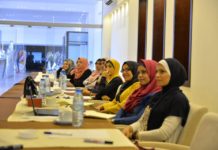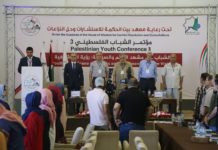The basic garment is the thobe – which is a bit like a long shirt. This is similar to the Egyptian galabia. Before the 1900s it was white or blue – usually to knees – but sometimes to ankles.

After WWI the thobes were replaced by European styled white qamis.
Men wore a range of overcoats including
- sheepskin jackets (farwah)
- broadcloth coats (jibbeh)
- cloaks (abaya)
- shaleh – a fancy version of the abaya with embroidery
- bisht – a short sleeved coat
From 1900s men also wore the Turkish qumbaz which had long narrow sleeves. Initially this was only worn in the city. However, as the city men adopted European trousers and jackets, the village men adopted this Turkish coat and baggy sirwal. However Bedouin remained bare legged.
In addition there are a range of traditional jackets (salta), waistcoats (sidriyeh) and long sleeved jackets (mintiyan).
Traditional Palestinian Male Headwear
rior to 1930s village men wore several layers of headwear. First a white cotton skull cap (taqiyeh), then white or grey felt cap (libbadeh or kubb`ah) then soft, rounded tarbush maghribi with a tassel.
Urban men and Ottoman officials wore tarbush istambuli – tall and stiff.
The tarbush was wrapped with a plain white cloth then the laffeh (turban) on top. The turban colour signified such things as the wearer was a descendent of the Prophet Muhammad (green), a Samaritan (red), or a Jew (black). But the most common colours were yellow, brown and orange. Older men tended to wear white.
From 1930s village men adopted the Bedouin keffiyeh as a symbol of nationalism. Initially these were white but later black and white or red and white checks became common. After 1967 Arafats’s black and white keffiyeh adopted widely.
Bedouins do not wear turbans but rather hattah or keffiyeh. Sometimes with a taqiyeh.
Boys only wore taqiyeh – or in some villages more elaborate caps.
References: Keohane, National, Wair.











